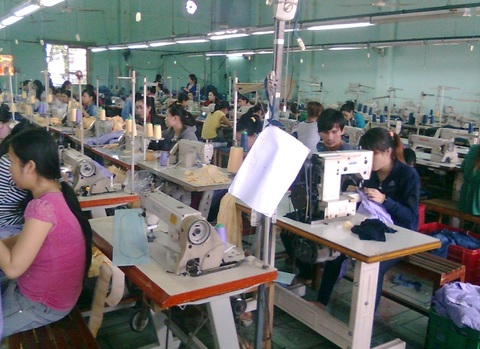
Phan Cao Thang, Permanent Vice Chairman of Binh Dinh People’s Committee, has authorised a plan to develop the province’s textile industry till 2025 with orientations to 2035.— Photo bidiusta.vn
Phan Cao Thang, Permanent Vice Chairman of Binh Dinh People’s Committee, has authorised a plan to develop the province’s textile industry till 2025 with orientations to 2035.
The key objectives of the plan are to build Binh Dinh’s textile industry into a key economic driver and one of the province’s chief high-quality export suppliers, to slowly synchronise production from input to output and to implement a global standard environment management system.
Binh Dinh aims to become the central coastal region’s textile centre and to enhance the national textile industry’s performance and competitiveness within the region and the world.
Between 2016 and 2020, the province is determined to increase growth in the textile industry’s production value to around 17.8 per cent. By 2020, the provincial total production value for the textile industry hopes to reach VND3.95 trillion (US$178.2 million), double that of 2015. Between 2016 and 2020, the region aims for a total export value of $495 million and new employment for 18,800 workers, up by 4,800 jobs compared to 2015.
From 2021 to 2025, Binh Dinh province’s textile production value hopes to increase 13 to 14 per cent each year with the industry’s total value reaching VND7.4 trillion to VND7.8 trillion, total export turnover at VND780 million, up by 1.6 times compared to the period from 2016 to 2020 and create employment for 22.000 to 23.000 workers, up by 3.800 to 3.900 jobs from the previous phrase.
Key products for the period 2016 to 2020 and 2021 to 2025 will include tracksuits, children’s clothing, business suits, dresses, uniforms and protective gear. Production quantity aims to increase to 51 to 53 million units in 2020 and up to 64 to 65 million units in 2025. As of 2016, Binh Dinh’s textile industry had produced 20 million units. Suits and uniforms had increased by 14.2 per cent, whereas knitwear increased by 312 per cent compared to the same period in 2015.
In order to achieve these goals, the province has invested in the textile industry to support diversified production that can transition from simple manual labour to complete production chain vertical integration. — VNS